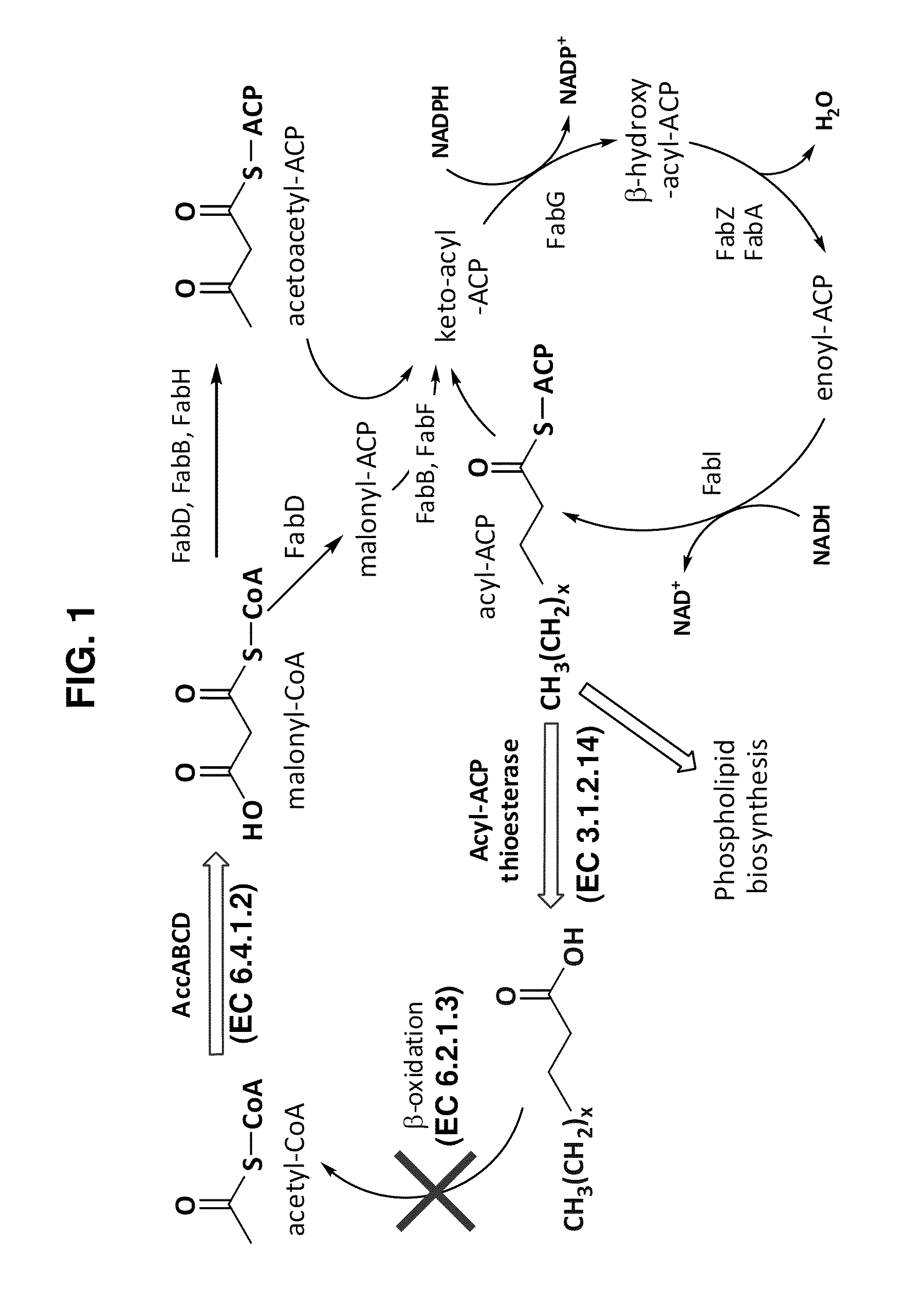Fatty acid-producing hosts
a technology of fatty acids and hosts, applied in the field of fatty acid-producing hosts, can solve the problems of high concentration of unwanted side products and economic inefficiencies
- Summary
- Abstract
- Description
- Claims
- Application Information
AI Technical Summary
Benefits of technology
Problems solved by technology
Method used
Image
Examples
examples
Introduction
[0137]Medium and long chain hydrocarbons can potentially serve as replacements for diesel, rendering them an attractive target for microbial production from lignocellulosic feedstocks. Microbially synthesized fatty acids are logical precursors to diesel-like hydrocarbons, and offer the flexibility to exploit a variety of biomass-derived carbon sources. Fatty acid biosynthesis (FIG. 1) is initiated by the conversion of acetyl-coenzyme A (CoA) to malonyl-CoA by acetyl-CoA carboxylase (ACC). Fatty acid biosynthesis is highly regulated at this initial rate-limiting step (Davis et al., (2000) J. Biol. Chem. 275:28593-28598; Li et al., (1993) J. Bacteriol 175:332-340). From malonyl-CoA, the condensing intermediate malonyl-acyl carrier protein (ACP), and ultimately the initial species that enters the elongation cycle, acetoacetyl-ACP, are generated. The elongation cycle fully reduces the β-ketoacyl-ACP to an acyl-ACP, which is then condensed with malonyl-ACP to lengthen the fat...
PUM
| Property | Measurement | Unit |
|---|---|---|
| Temperature | aaaaa | aaaaa |
| Fraction | aaaaa | aaaaa |
| Fraction | aaaaa | aaaaa |
Abstract
Description
Claims
Application Information
 Login to View More
Login to View More - R&D
- Intellectual Property
- Life Sciences
- Materials
- Tech Scout
- Unparalleled Data Quality
- Higher Quality Content
- 60% Fewer Hallucinations
Browse by: Latest US Patents, China's latest patents, Technical Efficacy Thesaurus, Application Domain, Technology Topic, Popular Technical Reports.
© 2025 PatSnap. All rights reserved.Legal|Privacy policy|Modern Slavery Act Transparency Statement|Sitemap|About US| Contact US: help@patsnap.com



